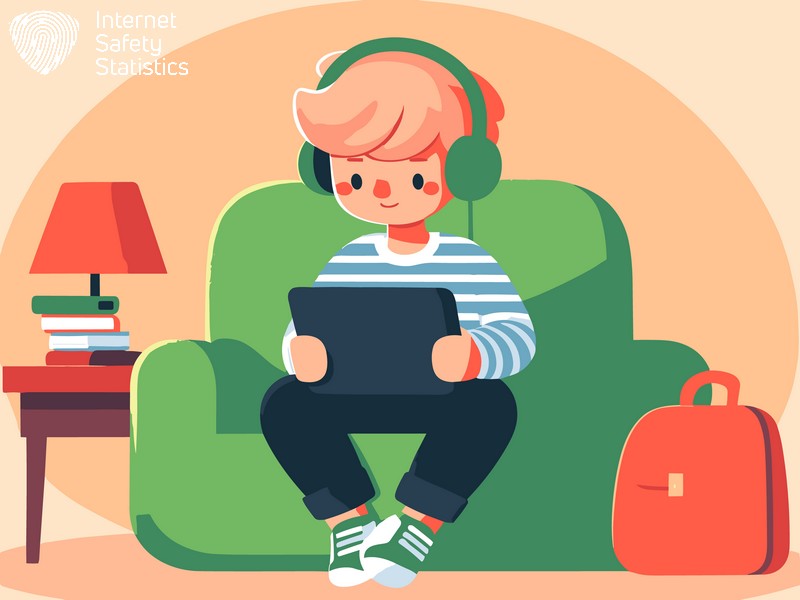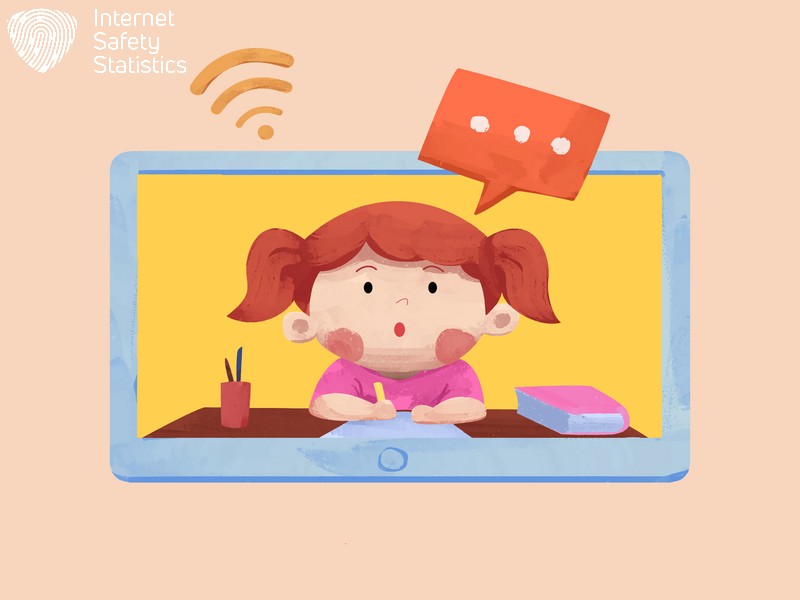
The internet presents a vast ocean of information and opportunities for children but also harbours potential dangers. Like the real world, navigating these digital landscapes requires open communication about sensitive topics to ensure their safety and well-being. This can be daunting for many parents who are unsure how to initiate these conversations or address specific issues.
This guide equips you with practical strategies for fostering open communication about your children’s online safety. We’ll explore effective ways to introduce sensitive topics such as cyberbullying, online predators, and inappropriate content. By creating a safe space for discussion, you empower your child to confide in you if they encounter anything troubling online.
The exploration delves into age-appropriate communication strategies, tailoring your approach to your child’s developmental stage. Additionally, the guide highlights various parental control tools and resources available across devices and platforms. These tools can be valuable allies in creating a safer online environment for your child, but open communication remains the cornerstone of effective online safety.
By actively engaging your child in conversations about online safety, you equip them with the knowledge and skills necessary to navigate the digital world confidently. This guide empowers you to foster a culture of trust and open communication, ensuring your child can explore the positive aspects of the internet while remaining safe from potential online threats.
Stay informed and empowered with us!
Why Protecting Kids Online is Important
The internet can expose children to various dangers, such as cyberbullying, online grooming, and exposure to inappropriate content. Parental involvement is crucial in ensuring their safety online.
Dangers of the Internet for Children
Children’s personal information is like gold to certain online predators. They often seek out unsuspecting young people who may unwittingly share sensitive details such as addresses, phone numbers, or passwords. Without proper guidance, kids might also engage with strangers who pose as friends but have harmful intentions. Cyberbullying adds another layer of risk; it can happen anytime and can be relentless, leaving children feeling targeted and helpless even in their own homes.
Parental involvement becomes crucial in safeguarding against these virtual threats. Adults should utilise tools like Communication Safety on Apple devices and other parental controls to block inappropriate content from reaching their children’s screens.
Encouraging kids to practise digital citizenship helps them understand the responsibility of using the internet. As protectors of our young ones’ online experiences, this leads us to explore how constant vigilance and appropriate tech tools form a barrier against exposure to adult content, which we will discuss next.
Need for Parental Involvement
Parental involvement is crucial in ensuring children’s online safety. Using tech tools, setting boundaries, and having open conversations about online risks is essential. This allows parents to monitor their children’s digital activities while providing guidance and support.
Teaching kids about privacy settings and the importance of not sharing personal information online is vital. Additionally, discussing sensitive topics such as cyberbullying and grooming helps children understand how to stay safe on the internet. By actively participating in their children’s online experiences, parents can create a secure environment that protects them from potential threats.
Tips for Preventing Exposure to Inappropriate Content
Protect your children from exposure to adult content by setting up parental controls on their devices and using internet filters. Establish ground rules and regularly check in with them about their online activities.
Three Ways to Prevent Exposure to Adult Content
To prevent exposure to adult content, parents and caregivers can take proactive steps using the following methods:
- Utilise parental control tools: Parents can use technological solutions to filter and block inappropriate content on their children’s devices. This helps restrict access to adult material and ensures a safer online experience for kids.
- Set clear ground rules: Establishing boundaries around online activities and educating children about the dangers of adult content can effectively prevent exposure. Regular check-ins and open communication further strengthen this approach.
- Educate kids about internet risks: Teaching children about the potential dangers of sharing sensitive information online, emphasising caution when interacting with strangers, and being mindful of the content they consume are crucial to preventing exposure to adult material.
Setting Ground Rules and Having Regular Check-ins
To ensure your child’s online safety, set clear rules for internet usage. These rules should cover what kind of content they can access, how much time they can spend online, and the importance of not sharing personal information with strangers. Regular check-ins are essential to monitor their compliance with these rules and to have open discussions about any concerns or issues that may arise.
Establishing firm boundaries and discussing internet safety openly helps children understand the risks and empowers them to make responsible choices. Regularly checking in with them lets you stay informed about their online activities and provide guidance when needed.
Children’s Online Safety: How to Talk About Sensitive Topics

“Communicating openly with your children about online grooming and abuse is crucial in ensuring their safety on the internet. Creating a safe space for them to ask questions and share their concerns is important.”.
Communication is Key
Open and honest communication with your children about online safety is essential. Regular conversations can deepen their understanding of potential risks and help them feel comfortable talking to you if they encounter something troubling online.
By discussing internet safety openly, you can empower your children to recognise and avoid potentially harmful situations. Encouraging open dialogue will also strengthen the bond between you and your child, making it easier for them to come to you for guidance when needed.
Educating yourself on the latest online threats and resources can enhance your ability to communicate effectively with your kids about internet safety. Stay informed about parental control tools and age-appropriate content filters that can protect your children from inappropriate content.
Understanding Online Grooming and Abuse
Communication is key when it comes to protecting children from online grooming and abuse. It’s crucial for parents and guardians to openly discuss the dangers of interacting with strangers online and how perpetrators may use deceptive tactics to establish trust and exploit children.
Additionally, educating children about recognising warning signs of grooming behaviours, such as excessive flattery or gifts from an online acquaintance, can empower them to protect themselves.
Being aware of the potential risks associated with online interactions allows adults to keep a close eye on their child’s internet activities, identifying suspicious behaviour or unwarranted attention from strangers.
Managing Access to Adult Content

Utilise parental control tools and ensure age-appropriate content filters are set up on all devices your child can access. This is crucial in protecting them from stumbling upon inappropriate content while browsing the internet.
Utilising Parental Control Tools
Parents can utilise parental control tools to protect children from inappropriate online content. Here are some effective ways to do so:
- Activate age-appropriate content filters to block out adult material and ensure that children only access suitable content.
- Use tech tools to monitor and restrict the amount of time kids spend online, helping to manage their screen time effectively.
- Implement parental controls on devices and apps to regulate what children can access and who they can communicate with online.
- Set up restrictions for downloading or purchasing apps, games, or other digital content to prevent exposure to inappropriate material and potential threats.
- Utilise communication safety features on devices such as Apple’s technology to limit the sharing or viewing of sensitive content.
Ensuring Age-Appropriate Content Filters
Utilising parental control tools is essential, but ensuring age-appropriate content filters is equally important. This step helps curate the online environment for children by restricting access to material that may not be suitable for their age. Here are practical ways to ensure age-appropriate content filters:
- Utilise age ratings and parental controls provided by online platforms and streaming services to limit access to inappropriate content based on the child’s age.
- Review and update the filter settings regularly to align with your child’s developmental stage and individual needs, taking into account any emerging online risks or concerns.
- Educate yourself about the various filtering options available, including keyword filters, image recognition technology, and website blacklisting, to tailor the protection according to your child’s specific vulnerabilities.
- Consider opting for comprehensive security suites that offer customisable content filtering features and other digital protection tools, such as anti-malware and safe browsing capabilities.
Strengthening Children’s Online Safety

Strengthening online safety for kids involves constant monitoring and parental involvement. Teaching children about the potential dangers of the internet and setting ground rules for their online activities is essential in keeping them safe.
Importance of Monitoring and Involvement
Parents and caregivers play a crucial role in safeguarding children from online threats. Regularly monitoring and being actively involved in their online activities allows for quick action to address any potential risks or concerns. Educating oneself about the digital landscape empowers adults to guide children effectively, ensuring their safe navigation through the vast online world.
Utilising age-appropriate content filters, parental control tools, and setting boundaries for online activities can significantly bolster children’s safety on the internet. Parents can build trust by maintaining open communication and engaging with kids about their digital experiences while imparting necessary knowledge for staying secure online.
Teaching Kids About Online Safety
It’s important to educate children about online safety. Here’s how you can do it:
- Initiate open discussions about the potential dangers of sharing personal information online.
- Teach children to avoid clicking suspicious links or opening messages from unknown sources.
- Establish safe social media usage guidelines, including privacy settings and friend requests.
- Encourage kids to seek help if they experience cyberbullying or encounter inappropriate content.
- Emphasise the importance of reporting any concerning online behaviour to a trusted adult or authority figure.
- Educate children about the risks of engaging with strangers in online gaming platforms or chat rooms.
- Offer guidance on setting strong passwords and protecting sensitive information from potential hackers.
- Engage kids in interactive activities that illustrate the concepts of online privacy and security.
- Lead by example by demonstrating responsible internet use and discussing real-life examples of online safety issues.
Empower parents to initiate conversations about online safety with their children. Teach kids how to be cautious and vigilant while navigating the digital realm. Provide resources for parents to effectively use parental controls and monitoring tools. Guide children in understanding the importance of protecting personal information online. Educate parents and children on the potential risks of online interactions, enabling informed decision-making.
FAQs
1. Why is it important to talk about online safety with children?
It’s crucial because educating kids about internet risks, like cyberbullying and inappropriate content, helps protect them while they navigate the web.
2. How can parents control what their children see online?
Parents can implement parental controls to filter inappropriate content, monitor their kids’ online behaviour, and block access to harmful materials.
3. What key internet safety tips for kids should I teach?
Teach your children the basics of online privacy, stress the importance of not sharing personal information, guide them in practising good online etiquette, and discuss social media safety.
4. What should I do if my child sees something upsetting online?
Talk openly with your child about any disturbing content they encounter; reassure them that they can come to you with concerns and utilise available resources for additional support.
5. How can I help prevent cyberbullying involving my child?
Encourage open communication about any negative experiences your child may have online; educate them on recognising cyberbullying signs and taking steps towards prevention by reporting issues immediately.
